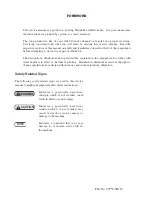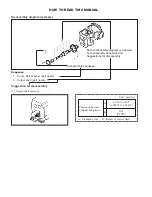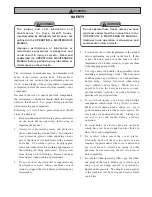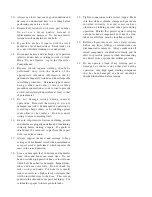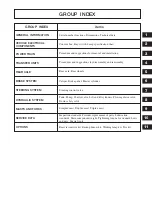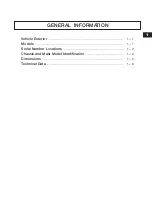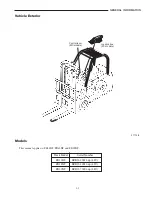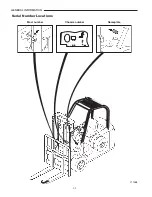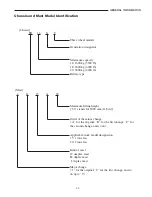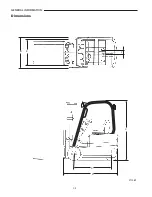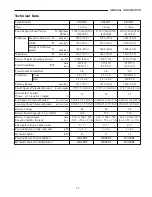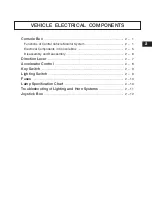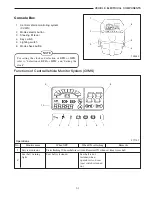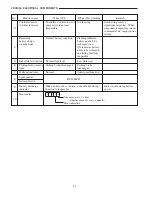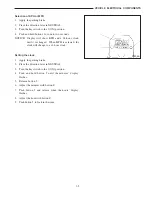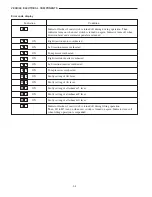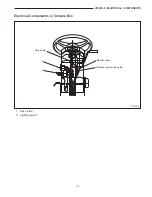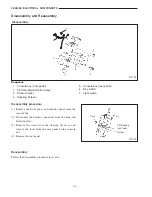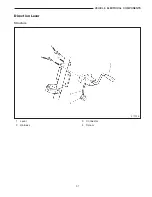
10.
Always use tools that are in good condition and
be sure you understand how to use them before
performing any service work.
11.
Reinstall all fasteners with same part number.
Do not use a lesser quality fastener if
replacements are necessary. Do not mix metric
fasteners with standard nuts and bolts.
12.
If possible, make all repairs with the truck
parked on a level, hard surface. Block truck so it
does not roll while working on or under truck.
13.
Disconnect battery and discharge any capacitors
(electric trucks) before starting to work on truck.
Hang “Do not Operate” tag in the Operator’s
Compartment.
14.
Repairs, which require welding, should be
performed only with the benefit of the
appropriate reference information and by
personnel adequately trained and knowledgeable
in welding procedures. Determine type of metal
being welded and select correct welding
procedure and electrodes, rods or wire to provide
a weld metal strength equivalent at least to that
of parent metal.
15.
Do not damage wiring during removal
operations. Reinstall the wiring so it is not
damaged nor will it be damaged in operation by
contacting sharp corners, or by rubbing against
some object or hot surface. Do not connect
wiring to a line containing fluid.
16.
Be sure all protective devices including guards
and shields are properly installed and functioning
correctly before starting a repair. If a guard or
shield must be removed to perform the repair
work, use extra caution.
17.
Always support the mast and carriage to keep
carriage or attachments raised when maintenance
or repair work is performed, which requires the
mast in the raised position.
18.
Loose or damaged fuel, lubricant and hydraulic
lines, tubes and hoses can cause fires. Do not
bend or strike high pressure lines or install ones
which have been bent or damaged. Inspect lines,
tubes and hoses carefully. Do not check for
leaks with your hands. Pin hole (very small)
leaks can result in a high velocity oil stream that
will be invisible close to the hose. This oil can
penetrate the skin and cause personal injury. Use
cardboard or paper to locate pin hole leaks.
19.
Tighten connections to the correct torque. Make
sure that all heat shields, clamps and guards are
installed correctly to avoid excessive heat,
vibration or rubbing against other parts during
operation. Shields that protect against oil spray
onto hot exhaust components in event of a line,
tube or seal failure, must be installed correctly.
20.
Relieve all pressure in air, oil or water systems
before any lines, fittings or related items are
disconnected or removed. Always make sure all
raised components are blocked correctly and be
alert for possible pressure when disconnecting
any device from a system that utilizes pressure.
21.
Do not operate a truck if any rotating part is
damaged or contacts any other part during
operation. Any high speed rotating component
that has been damaged or altered should be
checked for balance before reusing.


